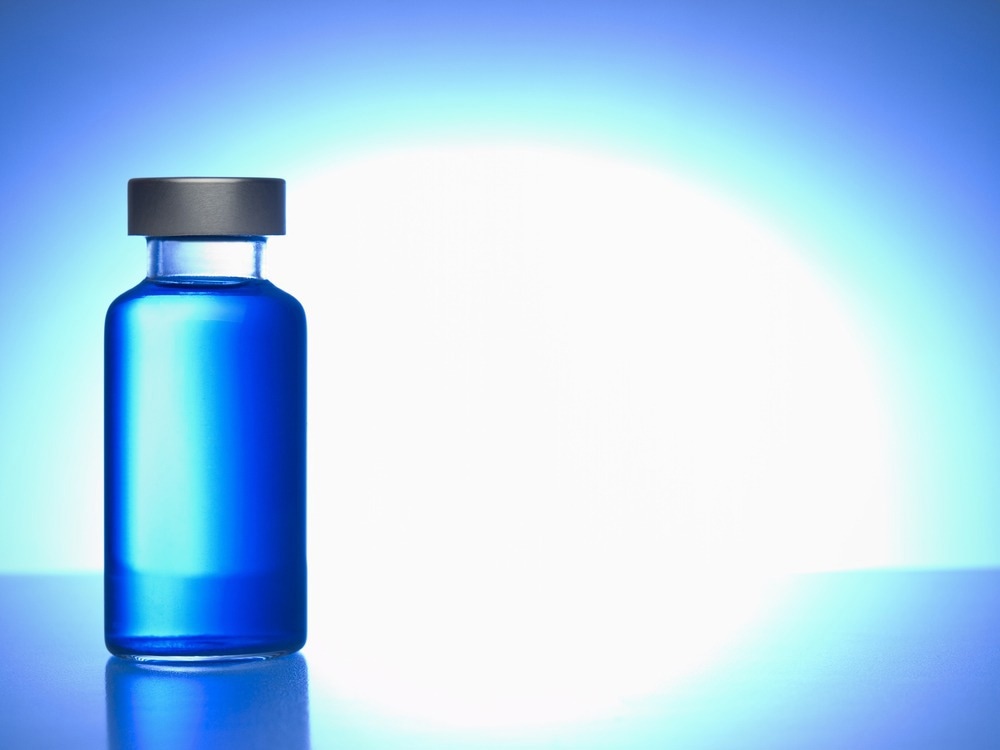Although photosensitizers (PSs) are critical for light-driven antibacterial therapy, the complexity of their synthesis and high-temperature requirement limit the applications of PS in antibacterial treatment. In an article recently published in the journal ACS Applied Nano Materials, researchers constructed photo-responsive nanocubes (AgPB) by functionalizing the silver nanoparticles (AgNPs) with kaempferol (Kae) and subsequently implanted them into Prussian blue (PB).

Study: Prussian Blue Nanocubes Decorated with Ag Nanoparticles for Near-Infrared Triggered Release of Bactericidal Ag+, Fe2+, and Fe3+ Ions. Image Credit: Anton Prado PHOTO/Shutterstock.com
The average size of as-prepared AgPB nanocomposites was approximately 140 nanometers, and the particle size was between 5 and 15 nanometers. The team characterized the structure of AgPB and evaluated their antibacterial activity under single 808-nanometer near-infrared (NIR) light.
Adjusting the AgNP’s doping ratio reduced the band gap from 2.78 to 2.56 electronvolts, which enhanced the AgPB’s photothermal conversion and generated reactive oxygen species (ROS). The researchers observed that AgPB illuminated under 808-nanometer NIR light were quickly heated to 50 degrees celsius, enhanced ROS formation, and promoted the release of Fe2+, Fe3+, and Ag+ ions, increasing the oxidative stress and consequently inhibiting the proliferation of bacteria.
Nanomaterial-based Antimicrobial Agents
Photothermal antibacterial therapy (PTA) and photodynamic antibacterial therapy (PDA) show high bactericidal activity and are less susceptible to the multidrug-resistant mechanism. However, single-mode PDA or PTA has limitations like inefficient bacterial ablation affecting surrounding healthy cells and tissues via photothermal effect alone. Moreover, PDA may cause photodegradation of PSs and depletes the oxygen inside the infected tissues.
At 50 degrees celsius, the bacterial resistance can be reduced, making them susceptible to the ROS without affecting the surrounding normal tissue cells. Thus, a dual-mode PTA and PDA strategy for antibacterial treatment is a promising approach. Although several highly efficient nanocomposite materials with both PTA and PDA were developed, their application for photothermal therapy (PTT) and photodynamic therapy (PDT) as antibacterial agents is challenging.
Thus, incorporating the PTT agent and PS into a nano-system can facilitate the dual-mode treatment. However, this incorporation comes with the drawback of complex synthetic procedures and unexpected interactions between the components. Moreover, there exists a mismatch in the absorption of the PS and PTT agent, and consequently, a single wavelength cannot excite the synergistic light-response, resulting in a longer treatment time.
PB is a metal−organic framework (MOF) constituting Fe3+, Fe2+ ions, and bridging cyano groups as major components. It is recognized as a therapeutic drug by the United States food and drug administration (US FDA) due to its excellent stability and biocompatibility. Furthermore, the transition of cyano bond due to charge transfer between Fe2+ and Fe3+ results in strong absorbance intensity of PB in NIR. Additionally, PB also served as PS by converting molecular oxygen into oxygen-free radicals.
AgNPs Decorated PB Nanocubes
In the present work, the researchers designed and developed the AgPB with PTA/PDA/ion triple modalities released under single NIR laser irradiation of 808 nanometers.
In this method, the Ag+ ions were anchored on the PB surface by leveraging the advantage of PB’s strong adsorption to metal ions, and Kae served as a reducing agent and stabilizer in synthesizing the AgNPs that were uniformly distributed on PB’s surface.
Kae reduced the Ag+ ions to form AgNPs, which exhibited a bactericidal effect along with a small amount of Ag+ ions, released in a sustained manner. Poly(N-vinylpyrrolidone) (PVP) served the goal as the PB stabilizer and ensured PB’s stable photothermal effect and silver carrying environment.
Combining AgNPs with PB built the typical Schottky junction that promoted the electron transport and reduced the electron-hole pair recombination induced by NIR light, thus increasing PB’s photothermal conversion rate and ROS output.
Additionally, AgPB controls the Ag+ ion release that is coordinated with PDA and PTA and exhibits the antibacterial activity under irradiation of NIR light. Compared to AgPB without NIR illumination, the AgPB showed in vitro antibacterial effect against Staphylococcus aureus and Escherichia coli under NIR light of 808 nanometers. Both the bacterial species were killed within 10 minutes of NIR irradiation, wherein biofilm formation was inhibited.
Conclusion
In summary, the researchers used AgNP-loaded PB to construct bactericidal nanocubes triggered by a single 808 nanometers NIR for synergistic triple-mode antibacterial therapy. The AgNPs had an average size of approximately 10 nanometers and were loaded on PB with an average size of 140 nanometers.
The enhanced photothermal conversion rate in AgPB was due to the narrowing of the band gap, indicating that irradiation under NIR light caused localized hyperpyrexia which triggered the effective release of Ag+, Fe2+, and Fe3+.
Additionally, the improved charge separation between electron-hole pairs in AgPB resulted in the generation of more ROS, which contributed to its photodynamic effect. Thus, the AgPB's triple-mode synergistic antibacterial PTT/PDT/ion release resulted in an excellent antibacterial potential under NIR irradiation, which inhibited the growth of Staphylococcus aureus and Escherichia coli within 10 minutes.
Reference
Ma, ZW., Li, W R., Zhang, J Y., Yang, WX., Tan, S., Cai, JY, and Deng, SP. Prussian Blue Nanocubes Decorated with Ag Nanoparticles for Near-Infrared Triggered Release of Bactericidal Ag+, Fe2+, and Fe3+ Ions. ACS Applied Nano Materials. https://pubs.acs.org/doi/10.1021/acsanm.2c01685
Disclaimer: The views expressed here are those of the author expressed in their private capacity and do not necessarily represent the views of AZoM.com Limited T/A AZoNetwork the owner and operator of this website. This disclaimer forms part of the Terms and conditions of use of this website.